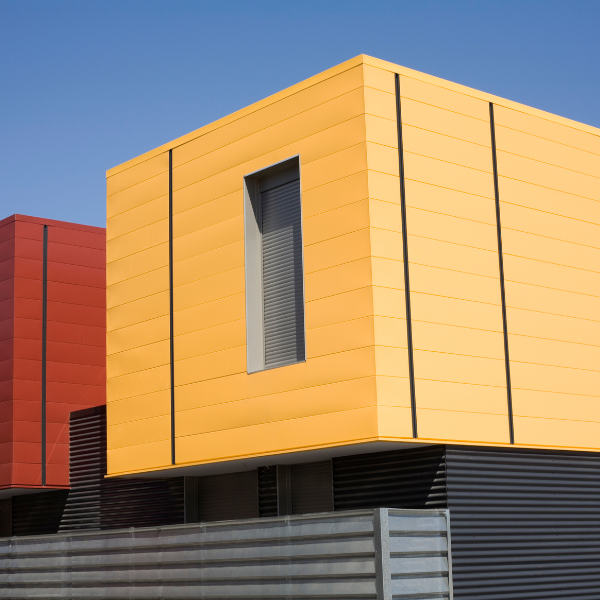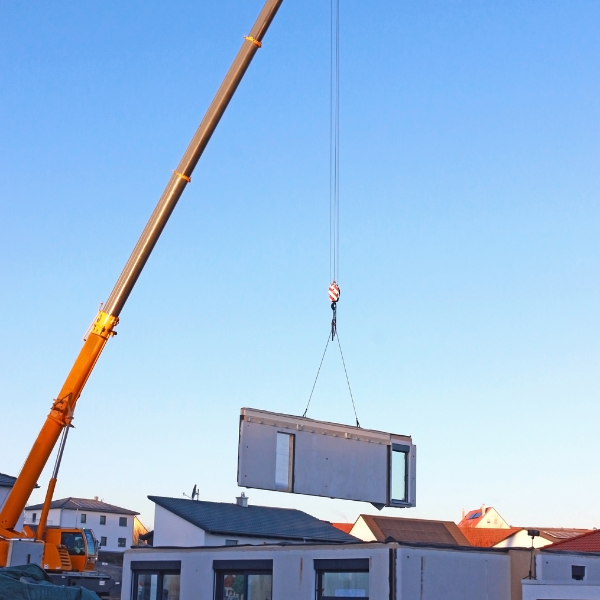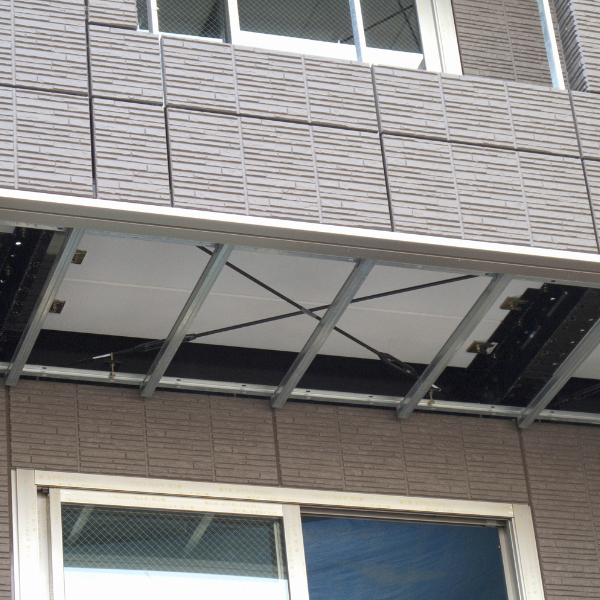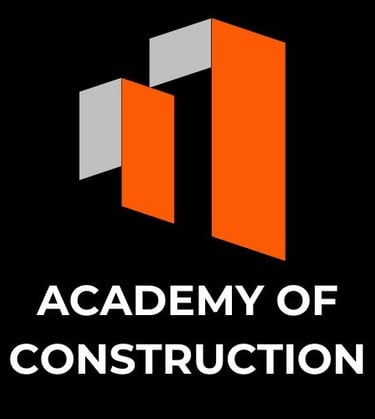A Strategic Report on Prefabricated Housing in Australia
Explore the future of Australia's prefab mobile housing: sustainability, innovation, and market growth potential.
PREFABRICATED HOUSING
The Australian prefabricated mobile housing industry is at a pivotal moment. With the construction sector accounting for a significant portion of the national economy, prefab housing is innovative in addressing current market needs. This report delves into the market's strategic analysis, highlighting key drivers of sustainability, efficiency, and innovation.
Market Overview and Demand Identification
Affordability issues and a growing interest in sustainable living have led to burgeoning demand for prefabricated homes. Representing about 5% of Australia's $150 billion construction sector, projections indicate an expansion to a 7-15% market share by 2025. This could add $30 billion to the economy and create 20,000 jobs. By 2033, a substantial 30% share is anticipated.
Regulatory and Industry Landscape
The prefabricated mobile housing industry's growth is not without its challenges. A significant hurdle lies in the regulatory landscape that poses substantial barriers to further expansion. Understanding and addressing these roadblocks is crucial for the successful progression of the sector.
Standardizing Terminology
Standardizing terminology related to prefab construction is needed to establish a common language within the industry and with regulatory bodies. This would mitigate confusion, enhance communication, and facilitate smoother transactions.
Streamlining Planning Approvals
Gaining planning approvals can often be cumbersome due to varying local regulations and codes. Streamlining these processes by establishing clear pathways for approval could significantly expedite project timelines and reduce costs.
Integrating Prefab Construction into National Codes
One of the most critical steps for broader acceptance of prefabricated homes lies in their integration into national building codes. This would provide a uniform set of guidelines for manufacturers, builders, and inspectors, ensuring quality control and safety.
Quote:
"Regulatory innovation is as important as technological innovation in unlocking new markets" - World Economic Forum.
By addressing these regulatory challenges, the industry can pave the way for faster growth, better consumer acceptance, and more widespread adoption of sustainable construction practices. Progress in this sector not only translates into economic benefits but also contributes significantly to environmental sustainability goals.
Sustainability and Environmental Benefits
Prefabricated homes offer reduced waste, lower carbon footprints, and easier integration of sustainable design features. Aligning with national and global sustainability goals is essential for the industry's progression.


Strategic Entry Points and Differentiation
In the rapidly transforming prefab technology sector, successful entry and sustainable growth heavily depend on the ability to differentiate from competitors. Three key areas can serve as strategic entry points while providing opportunities for differentiation.
Energy Efficiency
A focus on energy efficiency aligns with growing consumer preferences towards sustainable living and addresses affordability concerns through cost-effective solutions. Integrating energy-saving features such as solar panels, high-quality insulation, smart thermostats, and efficient appliances can contribute to long-term savings for homeowners. Here are some energy-efficient strategies that companies can adopt:
Solar Integration: Incorporating solar panels into design plans can significantly reduce electricity bills and contribute to a greener living environment.
High-Quality Insulation: Using superior-quality insulation materials can minimize heat loss in winter and keep the house cool in summer, leading to significant energy savings.
Energy-Efficient Appliances: Offering energy-efficient appliances as part of the package can enhance the appeal of prefabricated homes to environmentally-conscious consumers.
Disaster Resilience
Enhancing structural designs for disaster resilience provides a competitive edge, particularly in regions prone to extreme weather conditions or natural disasters. Prefab homes built with materials resistant to earthquakes, floods, and hurricanes add extra safety and assurance for potential buyers. This can include:
Earthquake-resistant designs: Utilizing flexible yet strong materials that absorb seismic shock can be a significant selling point in earthquake-prone regions.
Flood-proof construction: Elevated structures or waterproof materials can protect against flooding.
Hurricane-resistant features: Reinforced roofing systems and wind-resistant windows add to the durability of prefab homes in hurricane-prone areas.
Technological Integration
The rise of smart home technology presents a unique opportunity for prefab constructors to optimize functionality, thereby appealing to tech-savvy consumers. Integration of advanced home automation systems, smart lighting, security features, and energy management tools can make prefab homes more appealing to a modern audience.
Home Automation systems allow for the remote control of various home aspects, such as heating, lighting, and security.
Bright Lighting: Energy-efficient LED lights that can be controlled via smartphone apps or voice commands offer convenience and energy savings.
Advanced Security Features: Incorporating high-tech security features like smart locks, surveillance cameras, and alarm systems can enhance the appeal of prefab homes.
By embracing these strategic entry points and differentiation tactics, companies in the prefab housing sector can successfully navigate market complexities while catering to evolving consumer demands.
Government Support and Initiatives for Prefab Housing
The prefab housing industry has witnessed increased government support and initiatives in recent years. This is due mainly to recognising prefab technology's potential to deliver affordable housing projects quickly and efficiently. The rising federal interest in this sector suggests possibilities for increased support in the future.


Federal Recognition of Prefab Technology
Government bodies are increasingly acknowledging the benefits of prefabricated construction. These benefits include:
Speed of Construction: Prefab homes can be built much faster than traditional homes, as components are made off-site and then assembled on-site.
Cost-Efficiency: Prefab homes typically cost less than traditional homes due to economies of scale in production and reduction in on-site labour.
Sustainability: Prefab construction creates less waste compared to traditional construction methods, aligning with government initiatives aimed at reducing environmental impact.
Potential for Increased Support
The rise in federal interest in prefab housing indicates the potential for increased government support. This might come in the form of:
Funding: Grants or loans could be provided to facilitate research and development in prefab technology or to assist companies in scaling their operations.
Policy Initiatives: The government could implement policies that favour the use of prefab construction methods, such as tax incentives or relaxed building codes.
Public-Private Partnerships: There could be increased opportunities for collaboration between government bodies and private companies, which could lead to significant advancements in the sector.
The growing recognition from government entities regarding the potential of prefab technology is a promising sign for the sector. With continued support and initiatives, the prefab housing industry could significantly address affordable housing needs while contributing to sustainability goals.
Challenges and Risk Mitigation in Prefab Housing
The prefabricated housing sector faces a number of considerable challenges. These include the unpredictability of economic fluctuations, stringent regulatory hurdles, and stiff competition from traditional construction methods. However, these challenges can be addressed and mitigated through strategic planning and action.
Economic Fluctuations
The prefab housing industry, like any other, is susceptible to economic downturns and market volatility. It is, therefore, crucial for businesses in the sector to:
Diversify their offerings: By offering a range of products that cater to different market segments, companies can ensure steady revenues even when one segment is underperforming.
Maintain financial agility: Prefab housing companies must cultivate a strong financial foundation that allows them to weather economic downturns without jeopardizing their operations.
Regulatory Hurdles
Regulatory restrictions can significantly impact the growth of the prefab housing sector. To navigate these obstacles effectively, companies should:
Build strong regulatory relationships: Establishing open communication with regulatory bodies can help companies stay abreast of potential changes and influence regulations in favorable ways.
Stay informed and compliant: Companies should invest resources into understanding current regulations and ensuring compliance to avoid penalties and maintain good standing.
Competition from Traditional Construction Methods
Traditional construction methods still dominate the housing market, presenting stiff competition. However, prefab housing companies can leverage this challenge into an opportunity by:
Highlighting benefits through marketing: The key advantages of prefab houses – such as faster construction times, lower costs, and less environmental impact – should be emphasized in marketing efforts.
Investing in research and development (R&D): R&D can lead to innovations that improve efficiency and address existing limitations in prefab construction. This can give companies a competitive edge over traditional construction methods.
In conclusion, while challenges exist in the prefabricated housing sector, they can be mitigated through strategic diversification of offerings, robust regulatory relationships, effective marketing strategies, and an emphasis on research and development.


Funding and Financial Landscape of Prefabricated Housing
Despite the challenges faced in the prefabricated housing sector, the industry has attracted significant funding. A prime example is a substantial $4 million government grant bestowed upon the ARC Training Centre for Advanced Manufacturing of Prefabricated Housing at the University of Melbourne. This grant represents a significant financial investment in research and development within this sector.
This financial support underscores the confidence in this industry's potential growth and advancements.
Australia's Position in Prefab Housing Industry
Australia's prefabricated mobile housing industry stands in a unique position of advantageous growth. This is largely due to its:
Alignment with Environmental Sustainability: The prefab housing industry promotes sustainable practices by efficiently using materials and reducing on-site waste. This aligns with global trends towards eco-friendly living, positioning prefab housing as an attractive solution.
Technological Advancements: Integrating technology into prefab housing construction processes enhances precision, efficiency, and customization possibilities. Technological advancements such as 3D printing and automated assembly lines are instrumental in pushing the boundaries of what prefab housing can achieve.
Government Support: The Australian government's funding initiatives indicate a supportive stance towards this growing sector, further boosting its prospects.
Capitalising on Opportunities
To capitalise on this burgeoning market, stakeholders must adopt strategic innovations while overcoming regulatory challenges. Some ways to do this include:
Investing in cutting-edge technologies to improve manufacturing processes
Developing strategies to navigate regulatory landscapes effectively
Enhancing marketing efforts to communicate the benefits of prefab housing over traditional construction
By leveraging these strategies, stakeholders can tap into the immense potential within Australia's prefabricated mobile housing industry.




